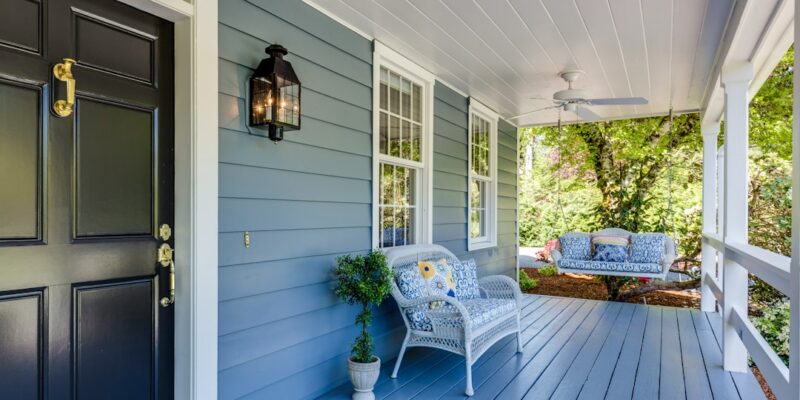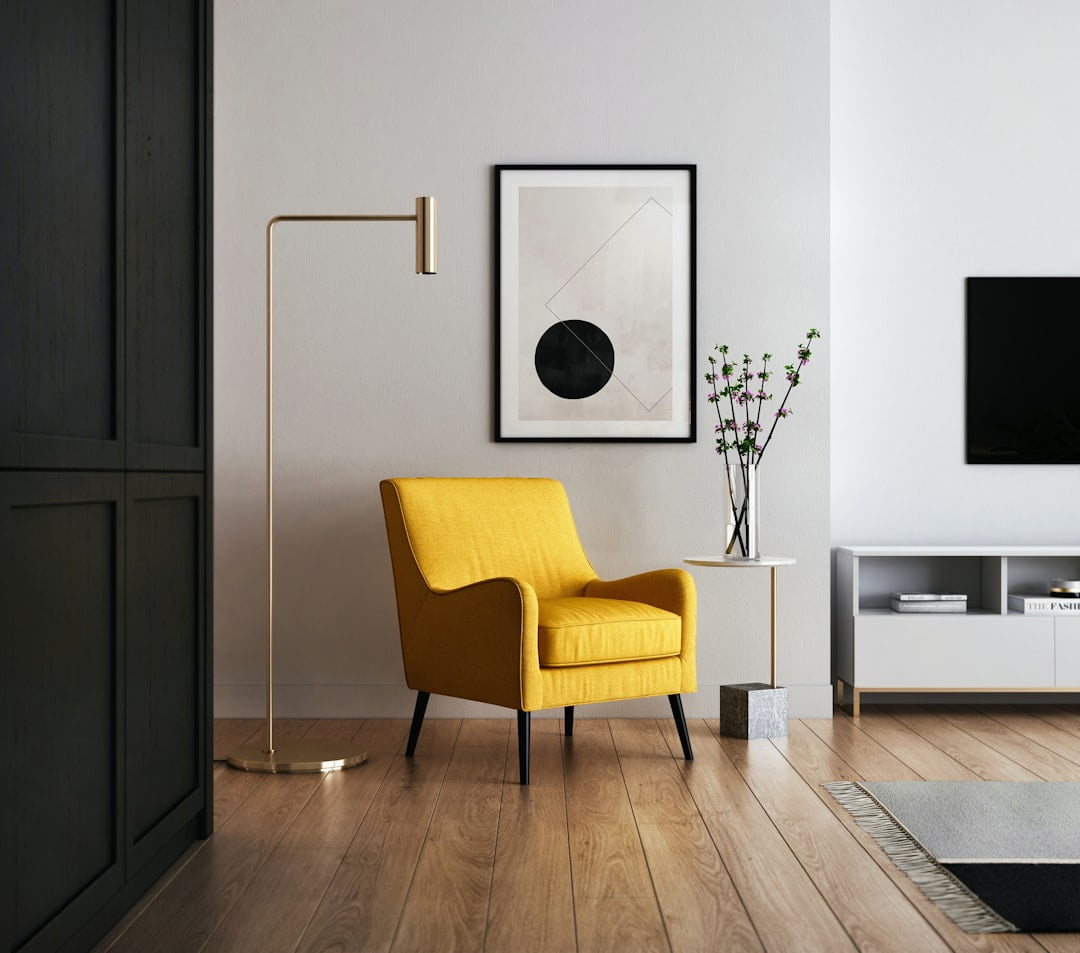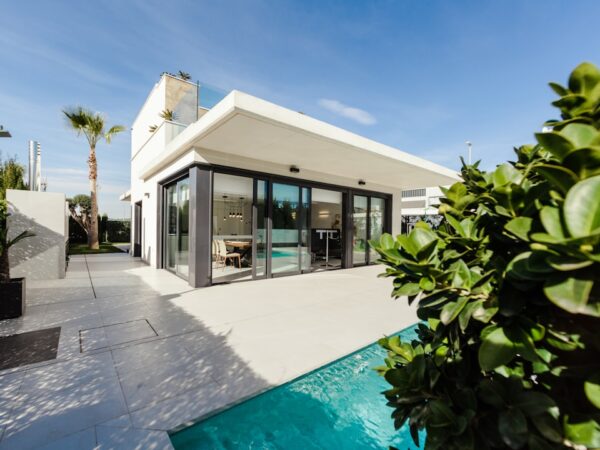
The Power of Real Estate Staging: How to Transform Your Property into a Buyer’s Dream Home
Real estate staging is the process of preparing a home for sale by strategically arranging furniture, decor, and other elements to showcase the property’s best features and create an inviting atmosphere for potential buyers. It is an essential part of the selling process as it helps buyers visualize themselves living in the space and can significantly impact their decision to make an offer. In today’s competitive real estate market, staging has become increasingly important in order to stand out from the competition and sell a home quickly and at a higher price.
Key Takeaways
- Real estate staging is worth the investment as it can increase the perceived value of a property and attract more potential buyers.
- Staging can tap into the psychology of home buyers by creating an emotional connection and helping them envision themselves living in the space.
- Professional real estate agents use various staging techniques such as decluttering, depersonalizing, and furniture placement to showcase a property’s best features.
- Homeowners on a budget can still stage their homes by using DIY tips such as adding fresh flowers, rearranging furniture, and updating lighting fixtures.
- Color and lighting play a crucial role in real estate staging as they can create a mood and highlight a property’s unique features.
The Benefits of Real Estate Staging: Why It’s Worth the Investment
a) Increased home value: One of the main benefits of real estate staging is that it can increase the perceived value of a home. By highlighting its best features and creating an appealing atmosphere, staging can make a property more desirable to potential buyers. This increased desirability can lead to higher offers and ultimately result in a higher sale price.
b) Faster sale: Staged homes tend to sell faster than unstaged homes. When a property is staged, it allows buyers to see the full potential of the space and envision themselves living there. This emotional connection can lead to quicker offers and a shorter time on the market.
c) Better online presence: In today’s digital age, the majority of home buyers start their search online. Staging a home can greatly improve its online presence by making it more visually appealing in listing photos and virtual tours. This can attract more potential buyers and generate more interest in the property.
d) Competitive advantage: With so many homes on the market, it’s important to stand out from the competition. Staging can give a property a competitive edge by making it look more polished, inviting, and memorable. A well-staged home will leave a lasting impression on potential buyers and increase the likelihood of receiving an offer.
Understanding the Psychology of Home Buyers: How Staging Can Help
a) Emotional connection to a home: Buying a home is an emotional decision. Potential buyers need to feel a connection to a property in order to make an offer. Staging can help create this emotional connection by showcasing the home’s best features and creating a warm and inviting atmosphere. By appealing to the buyer’s emotions, staging can make a lasting impression and increase the likelihood of a sale.
b) Importance of first impressions: First impressions are crucial when it comes to selling a home. Buyers often make up their minds within seconds of entering a property. Staging can help create a positive first impression by making the home look clean, organized, and well-maintained. This can set the tone for the rest of the showing and make potential buyers more likely to consider making an offer.
c) Staging to appeal to target buyers: Different types of buyers have different preferences and needs. Staging can be tailored to appeal to specific target buyers, whether it’s millennials, families, or empty nesters. By understanding the needs and preferences of the target market, staging can be used to highlight features that are most important to them and create a space that they can envision themselves living in.
The Top Staging Techniques Used by Professional Real Estate Agents
| Staging Technique | Description | Benefits |
|---|---|---|
| Decluttering | Removing unnecessary items to create a clean and spacious look | Helps buyers visualize themselves in the space and highlights the property’s features |
| Depersonalizing | Removing personal items such as photos and memorabilia | Allows buyers to focus on the property rather than the current owner’s personal style |
| Neutralizing | Using neutral colors and decor to appeal to a wider range of buyers | Makes the property feel move-in ready and allows buyers to envision their own style in the space |
| Highlighting | Emphasizing the property’s best features through furniture placement and decor | Draws attention to the property’s unique selling points and creates a memorable impression on buyers |
| Lighting | Using natural and artificial lighting to create a bright and welcoming atmosphere | Makes the property feel more inviting and can highlight specific areas of the space |
a) Decluttering and depersonalizing: One of the first steps in staging a home is decluttering and depersonalizing the space. This involves removing personal items such as family photos and knick-knacks, as well as clearing out any unnecessary clutter. This helps create a clean and neutral canvas that allows potential buyers to envision themselves living in the space.
b) Furniture placement: Proper furniture placement is key in creating flow and maximizing space in a home. Furniture should be arranged in a way that highlights the room’s best features and creates a natural flow from one area to another. It’s important to remove any oversized or unnecessary furniture that may make the space feel cramped or cluttered.
c) Lighting and color: Lighting and color can greatly impact the overall feel of a space. Natural light should be maximized by opening curtains and blinds and ensuring that windows are clean. In addition, artificial lighting should be used strategically to create a warm and inviting atmosphere. When it comes to color, neutral tones are generally recommended as they appeal to a wider range of buyers and create a clean and cohesive look.
d) Accessorizing: The right accessories can add the finishing touches to a staged home. This includes items such as throw pillows, rugs, artwork, and decor. Accessories should be used sparingly and strategically to enhance the overall aesthetic of the space without overwhelming it. It’s important to choose accessories that are on-trend and appeal to the target market.
DIY Staging Tips for Homeowners on a Budget
a) Repurposing furniture: Homeowners on a budget can save money by repurposing existing furniture instead of buying new pieces. This can be done by rearranging furniture in different rooms or using it in unexpected ways. For example, a dresser can be repurposed as a TV stand or a bookshelf can be used as a room divider.
b) Adding fresh flowers and plants: Fresh flowers and plants can add life and color to a staged home. They can be used as centerpieces on dining tables, placed on countertops, or used to fill empty corners. Fresh flowers and plants are relatively inexpensive and can make a big impact on the overall aesthetic of a space.
c) Rearranging artwork and decor: Rearranging artwork and decor is an easy and cost-effective way to freshen up a space. Existing artwork can be moved to different rooms or grouped together to create a gallery wall. Decor items such as vases, candles, and books can also be rearranged to create visual interest and enhance the overall aesthetic.
d) Cleaning and organizing: One of the most important aspects of staging is ensuring that the home is clean and organized. This includes deep cleaning carpets, scrubbing floors, and dusting surfaces. It’s also important to organize closets, cabinets, and other storage areas to showcase their full potential.
The Role of Color and Lighting in Real Estate Staging
a) Choosing the right color palette: The color palette used in staging can greatly impact the overall feel of a space. Neutral tones such as whites, grays, and beiges are generally recommended as they create a clean and cohesive look that appeals to a wide range of buyers. It’s important to choose colors that complement the existing features of the home and create a sense of harmony throughout.
b) Importance of natural light: Natural light is highly valued by home buyers as it creates a bright and airy atmosphere. When staging a home, it’s important to maximize natural light by opening curtains and blinds and ensuring that windows are clean. This can make a space feel more inviting and spacious.
c) Adding artificial lighting: In addition to natural light, artificial lighting should also be used strategically in staging. This includes overhead lighting, table lamps, floor lamps, and accent lighting. The right lighting can create a warm and inviting atmosphere and highlight key features of the home.
Furniture Placement: How to Make Your Home Look More Spacious
a) Removing unnecessary furniture: One of the key principles of staging is to create a sense of space and flow. This can be achieved by removing any unnecessary furniture that may make a room feel cramped or cluttered. It’s important to only keep essential pieces that enhance the overall aesthetic of the space.
b) Arranging furniture to create flow: Furniture should be arranged in a way that creates a natural flow from one area to another. This can be achieved by leaving clear pathways between furniture pieces and ensuring that there is enough space for people to move around comfortably. It’s important to consider the function of each room and arrange furniture accordingly.
c) Using mirrors to create the illusion of space: Mirrors can be a powerful tool in staging as they can create the illusion of space and reflect light. Placing mirrors strategically in a room can make it appear larger and more open. Mirrors can be used as wall decor, placed on mantels or dressers, or even used as tabletops.
Staging Your Outdoor Space: Creating Curb Appeal and Enticing Buyers
a) Importance of curb appeal: Curb appeal is crucial when it comes to selling a home. The exterior of a property is the first thing potential buyers see, so it’s important to make a good impression. This can be achieved by ensuring that the lawn is well-maintained, the driveway is clean, and the front door is in good condition. Adding fresh flowers, potted plants, and outdoor furniture can also enhance the overall aesthetic.
b) Adding outdoor furniture and decor: Outdoor spaces such as patios, decks, and gardens should be staged just like the interior of a home. Adding outdoor furniture such as chairs, tables, and loungers can create an inviting atmosphere and help potential buyers envision themselves enjoying the space. Outdoor decor such as lanterns, string lights, and planters can also enhance the overall aesthetic.
c) Landscaping tips: Landscaping plays a big role in creating curb appeal. It’s important to ensure that the lawn is well-maintained by mowing regularly and removing any weeds or dead plants. Adding fresh mulch to flower beds and trimming hedges and trees can also enhance the overall appearance of the property. It’s important to keep in mind that landscaping should be kept simple and low-maintenance to appeal to a wide range of buyers.
The Importance of Decluttering and Depersonalizing Your Home
a) Removing personal items: When staging a home, it’s important to remove any personal items such as family photos, personal collections, and religious or political decor. This allows potential buyers to envision themselves living in the space and creates a neutral canvas that appeals to a wider range of buyers.
b) Simplifying decor: In addition to removing personal items, it’s important to simplify the overall decor of a home. This includes decluttering surfaces such as countertops, tables, and shelves. It’s important to only keep essential decor items that enhance the overall aesthetic of the space.
c) Creating a neutral space: Creating a neutral space is key in staging as it allows potential buyers to envision themselves living in the home. This can be achieved by using neutral colors on walls and furniture, as well as choosing decor items that are on-trend and appeal to a wide range of buyers.
Staging for Different Types of Buyers: Millennials, Families, and Empty Nesters
a) Understanding the needs and preferences of different buyers: Different types of buyers have different needs and preferences when it comes to purchasing a home. Millennials may be looking for a modern and open-concept space, while families may prioritize functional and child-friendly features. Empty nesters may be looking for a downsized space with low maintenance. It’s important to understand the target market and stage the home accordingly.
b) Staging to appeal to each group: Staging can be tailored to appeal to different types of buyers. For example, staging a home office or gym can appeal to millennials who work from home or prioritize fitness. Creating a child-friendly play area or showcasing storage solutions can appeal to families. Downsizing furniture and creating a low-maintenance outdoor space can appeal to empty nesters.
Working with a Professional Stager: What to Expect and How to Choose the Right One
a) Benefits of working with a professional stager: Working with a professional stager can have many benefits. They have the expertise and experience to create a cohesive and appealing look that will attract potential buyers. They also have access to a wide range of furniture and decor items that can enhance the overall aesthetic of a home. In addition, they can provide valuable advice and guidance throughout the staging process.
b) Questions to ask when choosing a stager: When choosing a professional stager, it’s important to ask the right questions to ensure they are the right fit for your needs. Some questions to consider asking include: How long have you been staging homes? Can you provide references or examples of your work? What is your process for staging a home? What is your pricing structure?
c) What to expect during the staging process: The staging process typically begins with an initial consultation where the stager will assess the property and discuss goals and budget. They will then create a staging plan and schedule the necessary work, which may include decluttering, organizing, and rearranging furniture. The stager will then bring in any necessary furniture and decor items and stage the home. Once the staging is complete, professional photos may be taken for marketing purposes.
In conclusion, real estate staging is an essential part of selling a home in today’s competitive market. It offers numerous benefits such as increased home value, faster sale, better online presence, and a competitive advantage. By understanding the psychology of home buyers and using effective staging techniques, homeowners can create an inviting atmosphere that appeals to potential buyers. Whether homeowners choose to work with a professional stager or take on the task themselves, investing in staging is well worth it for a successful home sale.
If you’re looking to enhance the appeal of your home before putting it on the market, real estate staging can make a significant difference. By strategically arranging furniture, decor, and accessories, you can create a welcoming and attractive space that potential buyers will love. However, staging is not just about aesthetics; it can also have a psychological impact on buyers. According to a recent article on Wave Magnets, creating a calming and relaxing atmosphere in your staged home can help potential buyers feel more at ease and envision themselves living there. To learn more about natural sleep aids and relaxation techniques that can be incorporated into your staging process, check out this informative article: Natural Sleep Aids and Relaxation Techniques for Better Sleep.
FAQs
What is real estate staging?
Real estate staging is the process of preparing a property for sale by enhancing its visual appeal and creating a welcoming atmosphere for potential buyers.
Why is real estate staging important?
Real estate staging is important because it helps to showcase the best features of a property and make it more attractive to potential buyers. It can also help to sell a property faster and for a higher price.
What are some common staging techniques?
Common staging techniques include decluttering, depersonalizing, rearranging furniture, adding decorative accents, and improving lighting.
Who typically pays for real estate staging?
In most cases, the seller pays for real estate staging. However, some real estate agents may offer staging services as part of their commission.
How much does real estate staging cost?
The cost of real estate staging can vary depending on the size of the property, the extent of the staging, and the location. On average, staging can cost anywhere from a few hundred to several thousand dollars.
Is real estate staging necessary for every property?
Real estate staging is not necessary for every property, but it can be beneficial for properties that are difficult to sell or that have been on the market for a long time. It can also be helpful for properties that are vacant or that have outdated or unappealing decor.


















